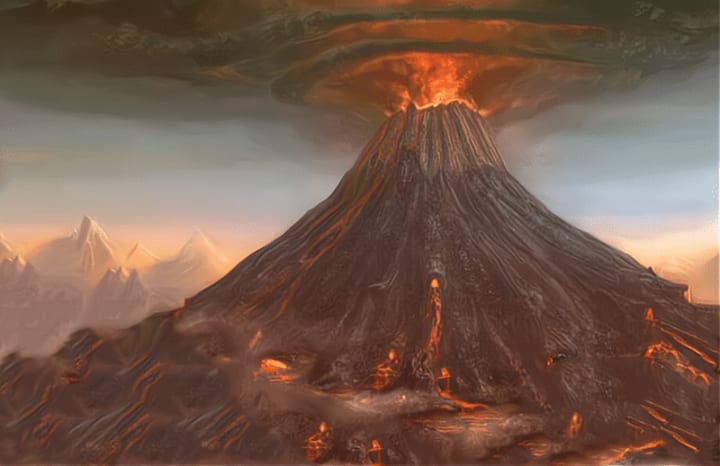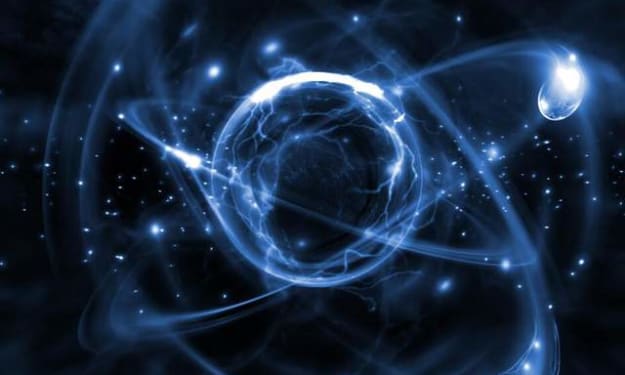How scary is Mount Fuji in Japan?
If an outbreak occurs, how serious are the consequences?

Located in Japan's Mount Fuji, a world-famous scenic spot, is also an active volcano, recently, news that Mount Fuji seems a bit stupid, undoubtedly triggered concern, then Mount Fuji in the end how terrible? If Mount Fuji erupts, how serious are the consequences? Here we will talk about this topic.
The first thing to say is that for us humans, large-scale volcanic eruptions are quite scary, a typical example is that on April 5, 1815, located in the northern part of Scumbag Island, Indonesia, Rambo volcano erupted violently, its release of debris flows, lava flows, volcanic ash and the subsequent earthquake and tsunami triggered, directly causing the loss of tens of thousands of humans in the nearby region valuable The eruption released debris flows, lava flows, ash, and subsequent earthquakes and tsunamis, directly causing tens of thousands of human lives to be lost in the surrounding area.
What's even more frightening is that in the following time, the material ejected from Rambo continued to spread with the flow of the Earth's atmosphere, significantly reducing the solar radiation that the Earth's surface could receive, resulting in 1816 being the lowest average temperature year in recorded human history.
This year was also known as the "year without summer", and due to the abnormally low temperature, there was a massive failure of food harvest or even no harvest at all, which led to an extreme shortage of food in many regions of the world, causing human suffering at that time.
It can be seen that if the eruption of Mount Fuji has such power, then it will cause serious consequences, but the question is, can the power of the eruption of Mount Fuji reach this level?
The above picture is the formation process of Mt. Fuji as speculated by scientists based on geological survey data. In short, the area where Mt. Fuji is located is a more active volcanic area, in hundreds of thousands of years, intermittent volcanic movement constantly spewing out material, some of these materials in the cooling layers stacked, and finally formed the Mt. Fuji see now.
The modern Mount Fuji on Earth from the shape of the conical volcano, with an altitude of about 3776 meters, which may not seem high, but the reality is that this altitude on the islands of the Earth has spewed been very high, so much so that height of Mount Fuji in the global islands of many high mountains can be ranked 7th, and to form this altitude of the conical volcano has an important condition, that is, in the process of its formation There must not be too violent eruptions.
To illustrate this point, let's take a look at Rambo volcano, the relevant data show that before the eruption in 1815, the elevation of Rambo volcano is about 4100 meters, and after the eruption, its elevation plummeted to about 2851 meters, and at its summit, it left a huge crater of about 6000 meters in diameter and 700 meters deep.
The main crater at the top of Mt. Fuji, on the other hand, is only about 780 meters in diameter and only about 240 meters deep, which is not even close to being comparable. So a reasonable speculation is that in days gone by, Mt. Fuji erupted far less powerful than that Mount Rambo in 1815, and indeed, the history of Mt. Fuji eruptions recorded by humans goes some way towards proving this view.
In the credible records that can be traced, Mount Fuji erupted more than ten times, the earliest of which occurred on July 31, 781, and the latest occurred on December 16, 1707, according to scientists' estimates, in these records, the largest eruption index is about level 5, compared to 1815, Rambo volcano eruption index reached level 7. This is two levels higher.

It is important to know that for each level of the eruption index, its power can be increased by 10 times, which means that since human records, the largest eruption of Mount Fuji is only about 1% of the eruption of Mount Rambo in 1815.
The scientific community generally believes that even if Mount Fuji erupted, its eruption index is at most about 5, and this level of eruption is not at all as terrible as imagined, and its consequences are not serious in the global context.
Of course, for the area near Mount Fuji, the consequences are not to be underestimated the Japanese side has long-organized researchers who have simulated the possible eruption of Mount Fuji, and we may come to a brief understanding.
The above figure is based on known data simulation of the impact of the eruption of Mount Fuji, you can see, Tokyo (Tokyo) is located in this range, and researchers speculate that if Mount Fuji erupted, the first will be in the nearby area triggered by a small earthquake, after which the debris flow and lava flow released may be small-scale destruction of some nearby low-lying buildings.
And the biggest impact is volcanic ash, you know the ash is not ordinary dust ash contains a large number of fine glass-like materials, if these "glass fragments" into the human respiratory system, the consequences will be quite serious.
According to researchers' estimates, the eruption of Mount Fuji will spew hundreds of millions of cubic meters of ash, and within a few hours, this volcanic ash will spread to most of the above-mentioned areas.
In addition to the serious threat to the human respiratory system during the deposition of this ash, it will also cause a dramatic reduction in local visibility and prevent roads from providing sufficient friction for moving vehicles, which will lead to the disruption of road traffic, while railroads and airports will also be shut down due to the rampant ash.
A large amount of ash is also likely to damage power plants and communications infrastructure located outdoors and contaminate nearby water sources, causing serious problems with local electricity, water, and communications.
Researchers point out that depending on the weather conditions, this bad situation will last from a few days to a few weeks, and it is estimated that tens of millions of people will be in distress if there is no timely warning or improper handling.
So, if Mount Fuji erupts, will our country be affected? We do not need to worry about this, first of all, the power of the eruption of Mount Fuji is not large, you know the aforementioned Rambo eruption will affect the entire planet because of the hundreds of billions of cubic meters of ash ejected, compared to Mount Fuji but only hundreds of millions of cubic meters of ash ejected, which is too far away.
On the other hand, the area where Mount Fuji is located is in the westerly wind belt of the earth, that is, the prevailing winds blow from west to east in this area, so even if Mount Fuji does erupt, the volcanic ash emitted will be blown to the depths of the Pacific Ocean in the subsequent diffusion process, these volcanic ash is not large, plus the direction of diffusion is not right, so it will not cause any impact on China.
About the Creator
Baudamolova
Science is the graveyard of buried faded the various ideas。






Comments
There are no comments for this story
Be the first to respond and start the conversation.